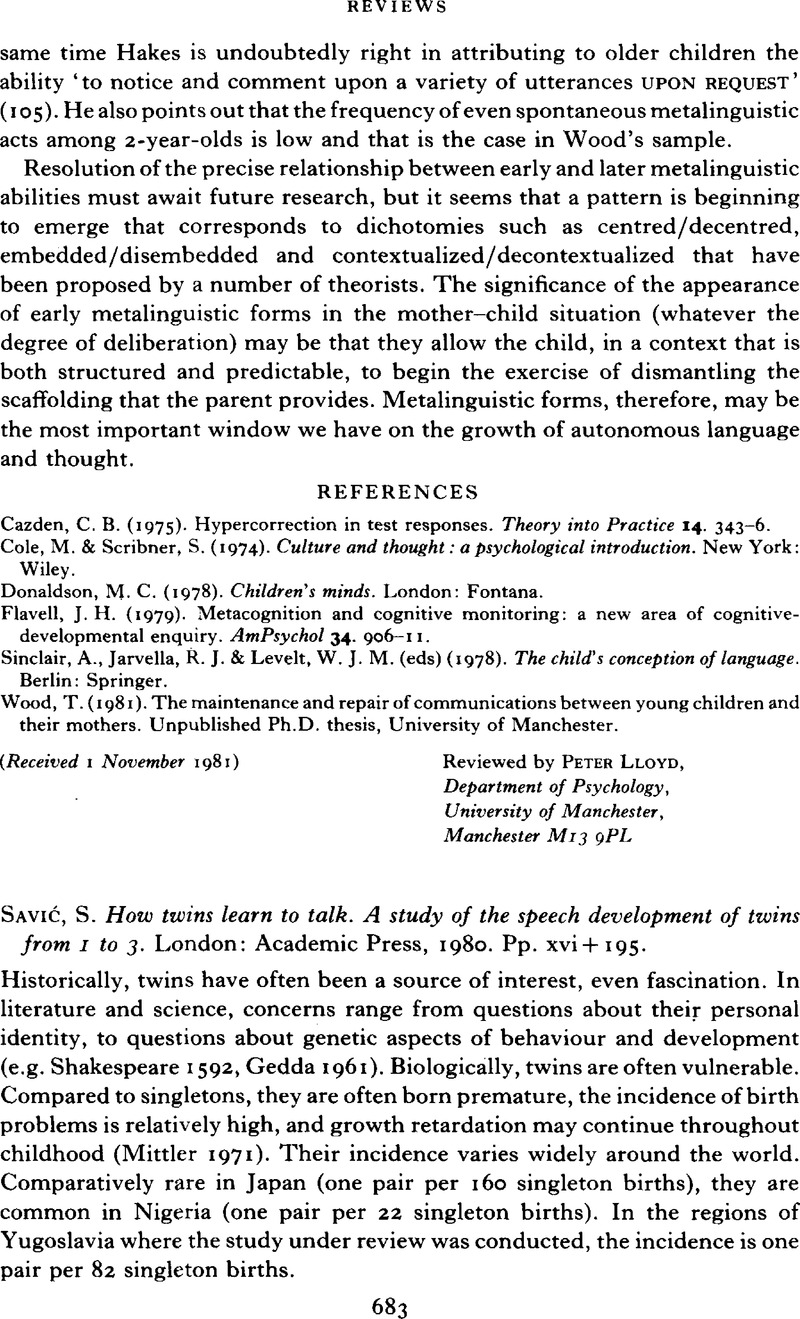No CrossRef data available.
Article contents
S. Savić How twins learn to talk. A study of the speech development of twins from 1 to 3. London: Academic Press, 1980. Pp. xvi + 195.
Published online by Cambridge University Press: 26 September 2008
Abstract
An abstract is not available for this content so a preview has been provided. Please use the Get access link above for information on how to access this content.

- Type
- Reviews
- Information
- Copyright
- Copyright © Cambridge University Press 1982
References
REFERENCES
Davis, E. A. (1937). The development of linguistic skills in twins, singletons with siblings and only children from age five to ten years. Minneapolis: University of Minnesota Press.Google Scholar
Day, E. (1932). The development of language by twins. I. A comparison of twins and single children. ChDev 3. 179–99.Google Scholar
Labov, W. (1969). The logic of nonstandard English. Georgetown Monographs on Language and Linguistics 22. 1–31.Google Scholar
Lübbe, H. (1974). Preliminary report on a study of the language acquisition process of a pair of twins. Paper presented at the VIII International Congress of Sociology, Montreal.Google Scholar
Luria, A. R. & Yudovich, E. I. (1959). Speech and the development of mental processes in the child. London: Staples Press.Google Scholar
Mittler, P. (1969). Genetic aspects of psycholinguistic abilities. JChPsycholPsychiat 10. 165–76.Google ScholarPubMed
Pratt, C. & Grieve, R. (eds) (1980). Language awareness in children. Special Issue, Education Research and Perspectives 7. 1–112.Google Scholar
Savić, S. (1975 a). The development of possessive constructions (Serbocroatian-speaking children from 1 to 3). Paper presented at the IV International Congress of Applied Linguistics, Stuttgart.Google Scholar
Savić, S. (1975 b). Children's strategies in answering adults' questions (Serbo-Croatian-speaking children from 1 to 3 years). Paper presented at the Third International Child Language Symposium,London.Google Scholar
Shakespeare, W. (1592). The comedy of errors. (Foakes, R. A. (ed), New Arden Shakespeare). London: Methuen, 1962.Google Scholar
Sinclair, A., Jarvella, R. & Levelt, W. J. M. (1978). The child's conception of language. Vienna: Springer.CrossRefGoogle Scholar
Zazzo, R. (1960). Les jumeaux: le couple et la personne. Paris: Presses Universitaires de France.Google Scholar




